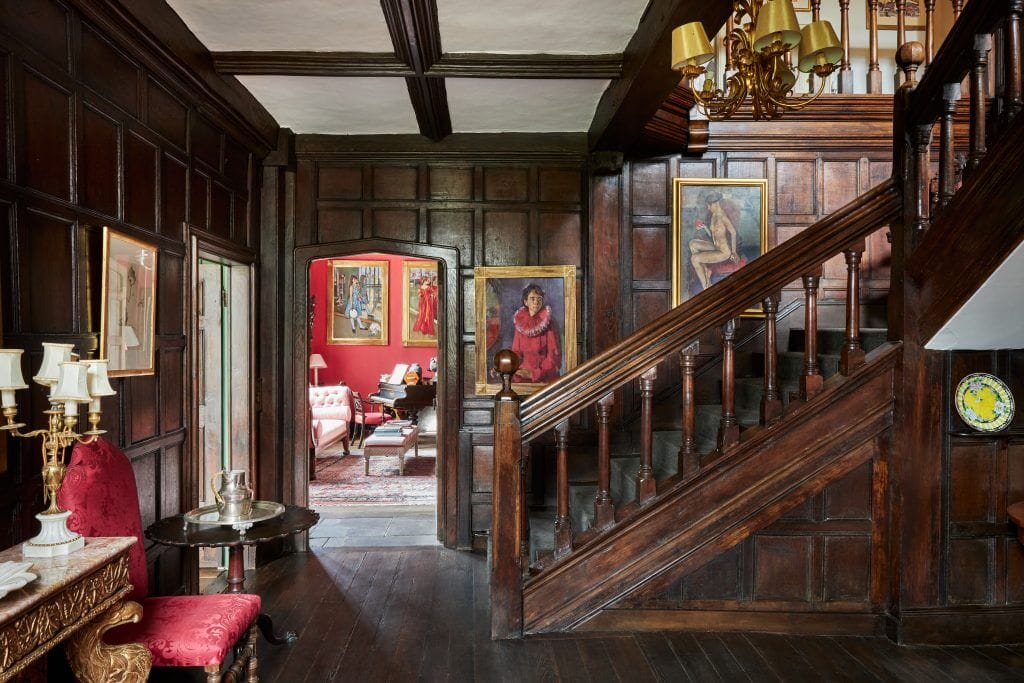Whilst tastes may change our appreciation for historical heritage will never wane.
Recently, I have had the pleasure of delving into two captivating historical books: “The Greatest Knight: The Remarkable Life of William Marshal, the Power Behind the Throne” by Thomas Asbridge and “She Wolves” by Helen Castor. Remarkably these texts frequently reference two properties which I have had the privilege of being involved in, with their comparatively recent sales.
The first among these is Bishop’s Palace, now a vestige of its former glory, along with the adjacent Palace House, an elegant Queen Anne residence situated on the edge of Bishops Waltham, near Winchester. The palace was originally built in the 1130s by the influential Bishop of Winchester, Henry of Blois — the younger brother of King Stephen. Over the centuries, it played host to numerous royal dignitaries, including Henry V prior to the Battle of Agincourt and Queen Mary I, who awaited King Philip of Spain for their nuptials.
The second is Devizes Castle, now a Victorian reconstruction upon the site of its medieval predecessor, which played a pivotal role in the annals of English history, particularly during the tumultuous conflict between King Stephen and Empress Matilda in the 12th century. Subsequently, several kings stayed in the castle, including King John and Henry III.
My clients, who acquired Palace House and Bishop’s Palace during the 1980s, often recounted their fierce competition against numerous history enthusiasts who yearned to possess a captivating fragment of history. However, our more recent experience with prospective buyers revealed a different sentiment. These individuals prioritised the aesthetic appeal of the later Queen Anne house, with its graceful proportions, while regarding the ruins as a secondary consideration.
This trend underscores the shift in preferences, as house buyers today predominately seek Georgian-style properties, characterised by good proportions, easy flow of rooms and large sash windows, as opposed to medieval manor houses, steeped in a historical narrative.
Does this signify a decline in our appreciation for history over the past three to four decades? The significant number of visitors to Devizes Castle, who expressed keen interest in its history suggests otherwise. However, a significant proportion of these enthusiasts, although initially captivated by the historical allure, were unwilling to forgo the comforts offered by Georgian and later residences.
In essence, we remain a nation that cherishes its historical heritage, albeit with a preference for more modern comforts when choosing our homes. Escalating maintenance costs have, understandably, also rendered these ancient structures a more daunting prospect.
Fortunately, a dedicated contingent of history connoisseurs remains steadfast in their search for historically significant residences. Though the pool of such discerning buyers may have dwindled, the demand for pre-1700 properties persists against a scarcity of supply, offering an opportunity for vendors to achieve a good sale.
Blue Book’s extensive experience in selling remarkable properties nationwide provide us a unique perspective on these historical treasures. Given the rarity of these architectural masterpieces, a comprehensive understanding of their historical value, both on a national and local level, proves invaluable. Furthermore, buyers with a penchant for historically significant properties – as well as houses with architectural merit in all eras – tend to be house-led rather than fiercely location specific.
